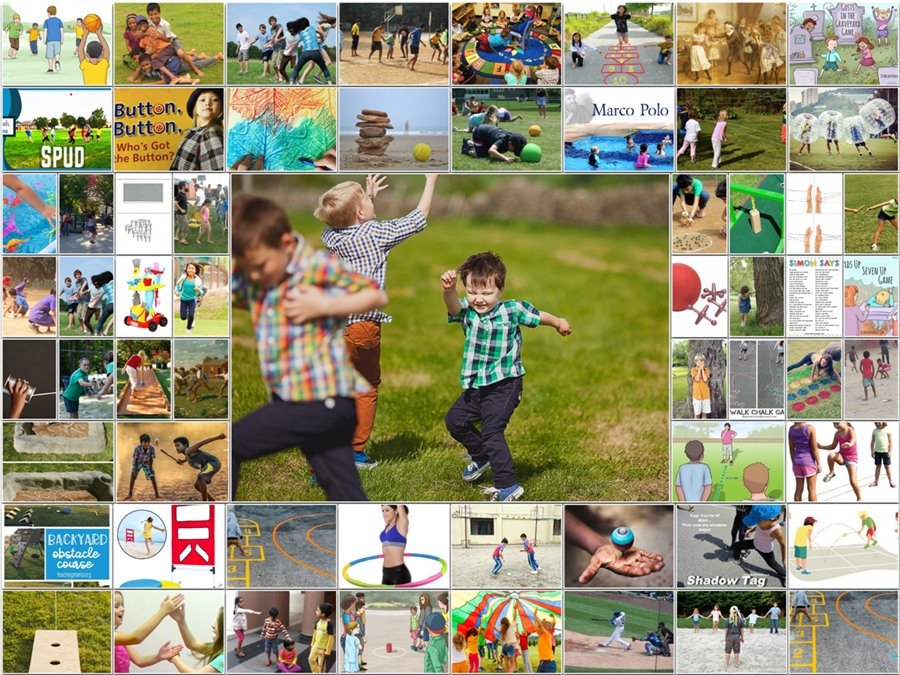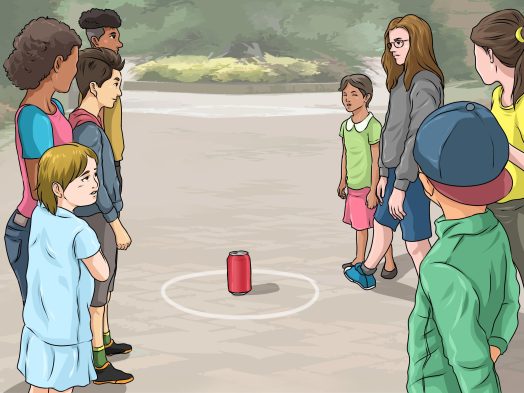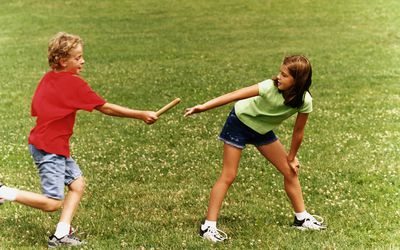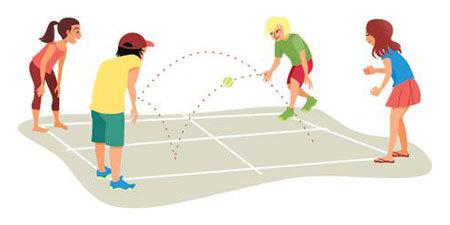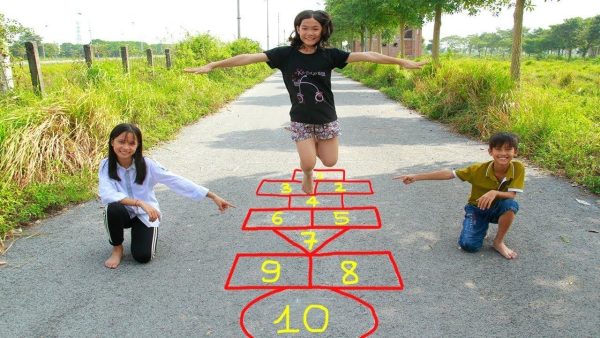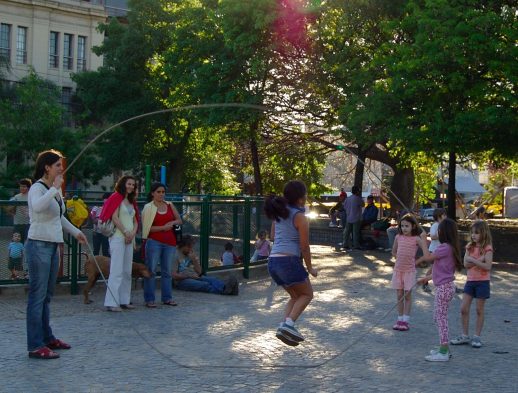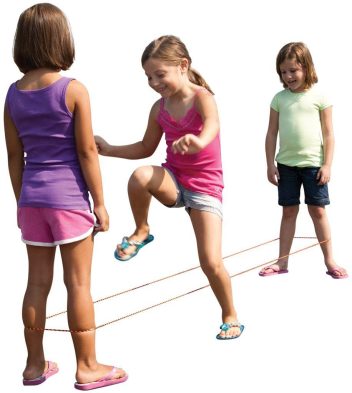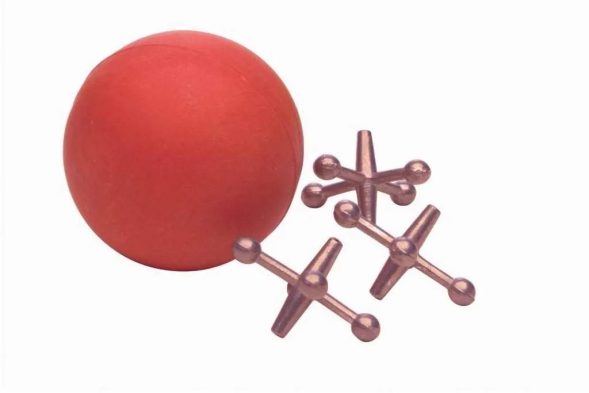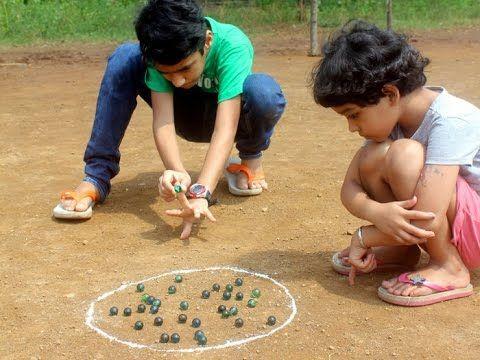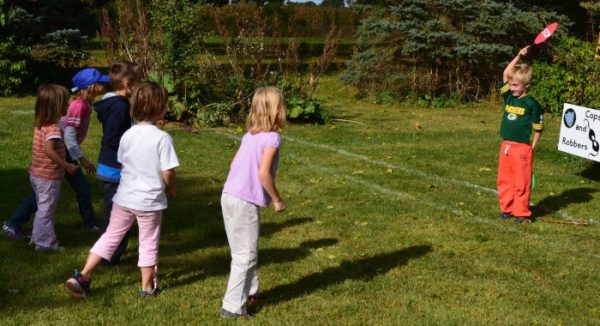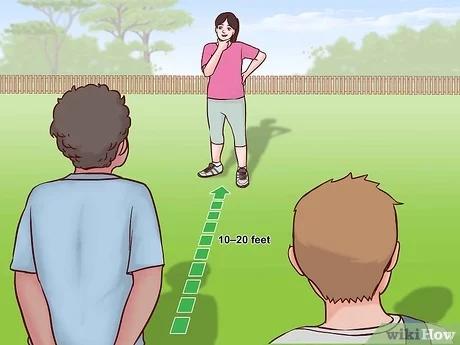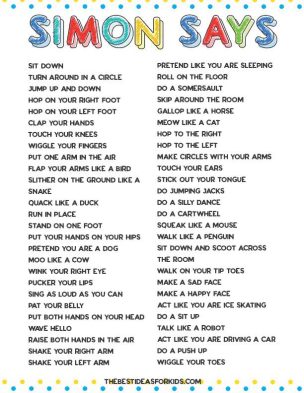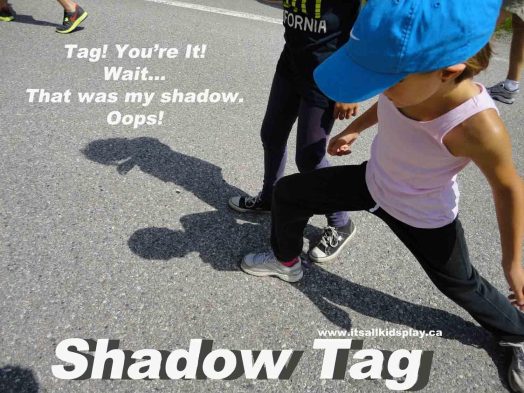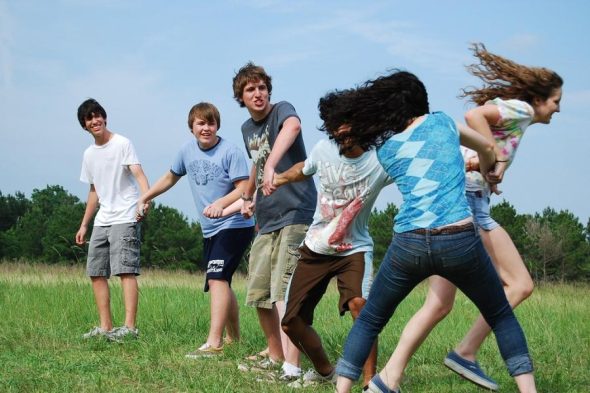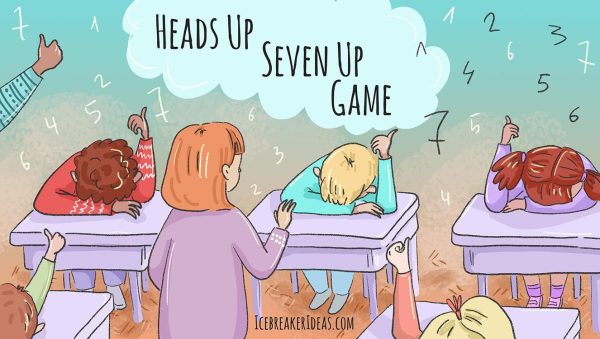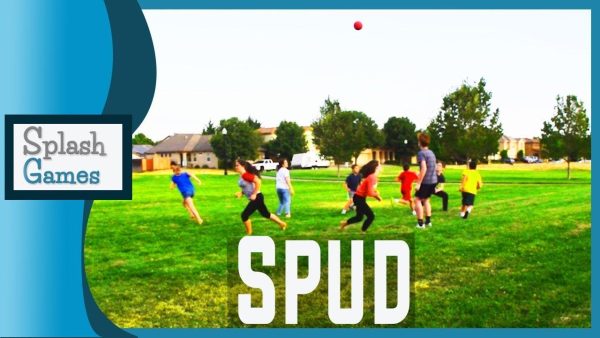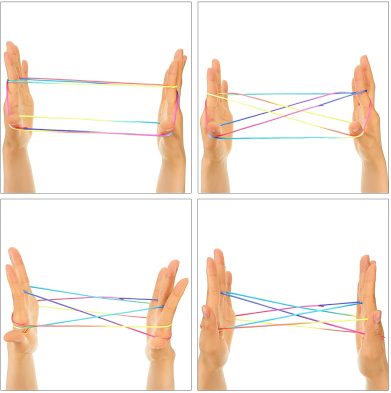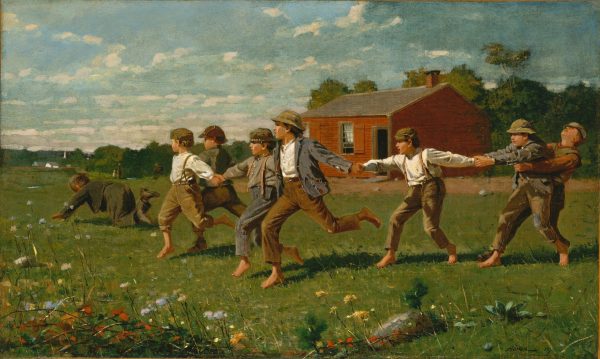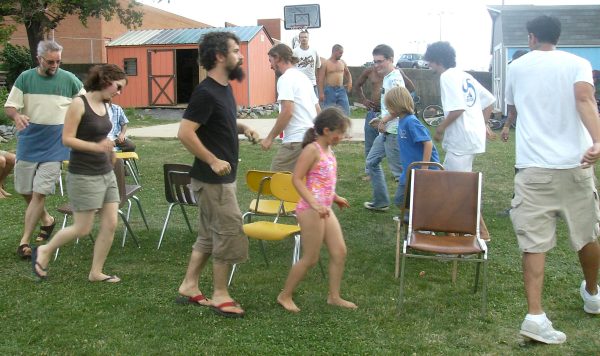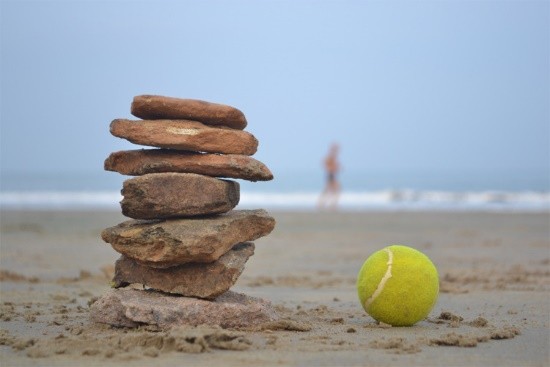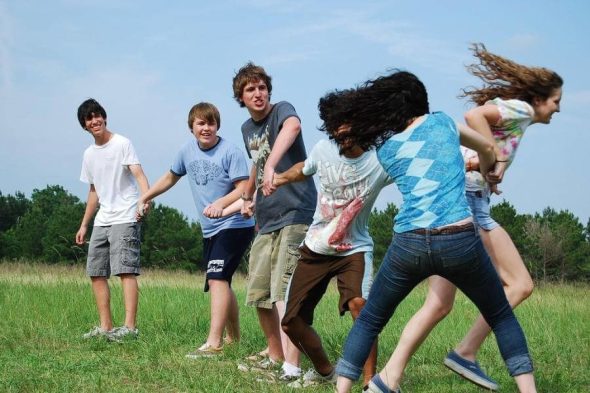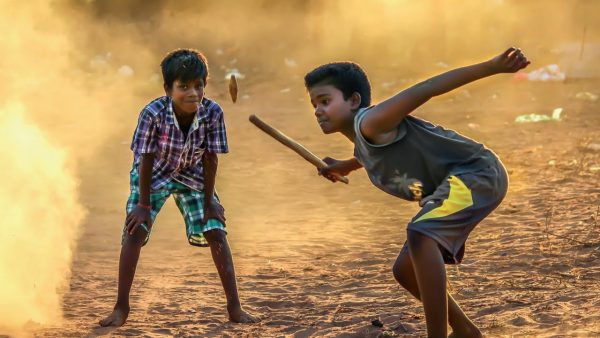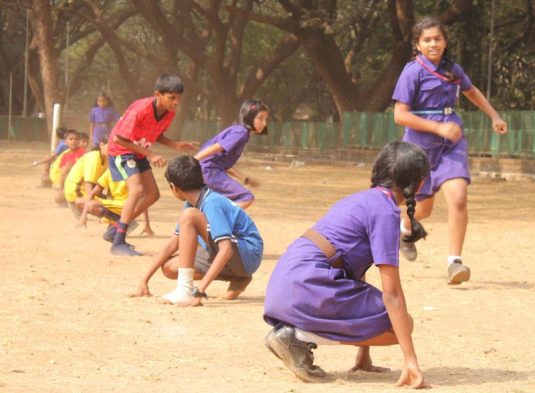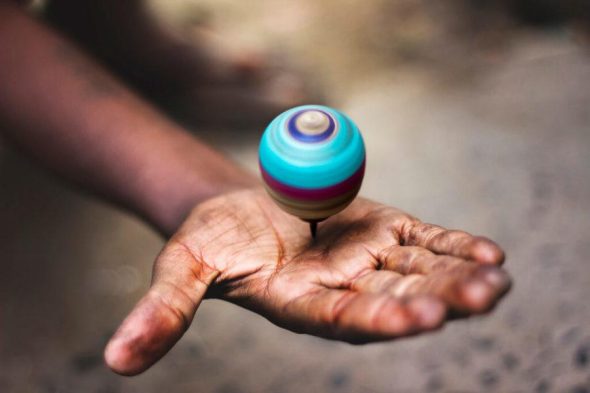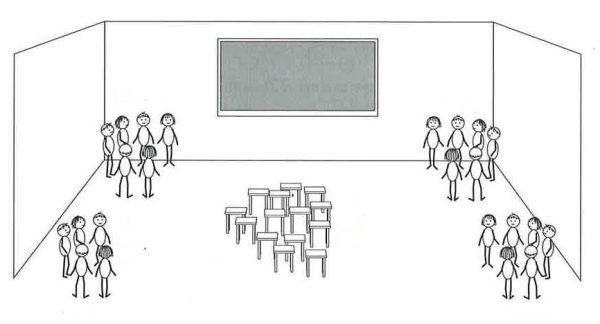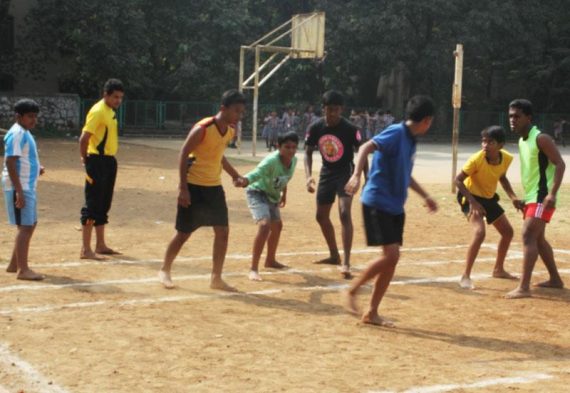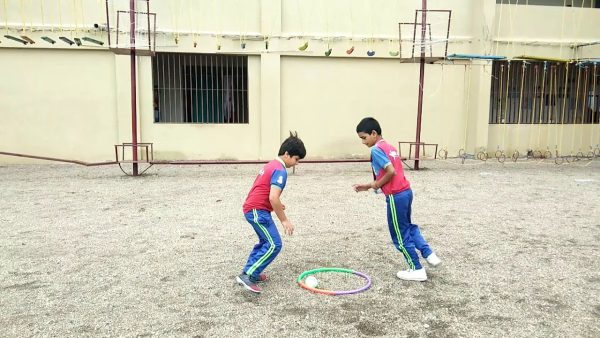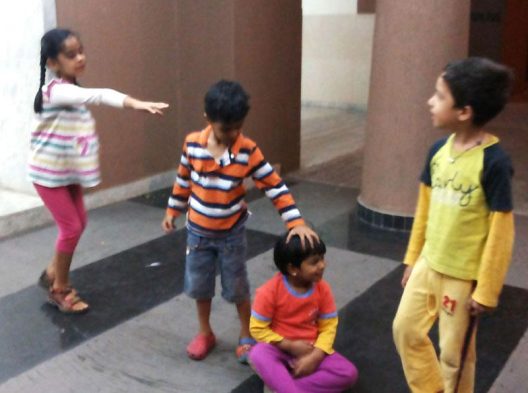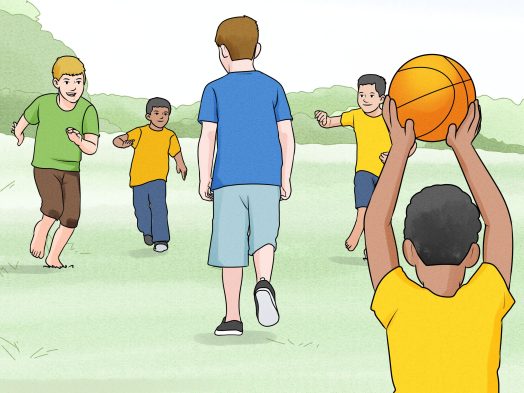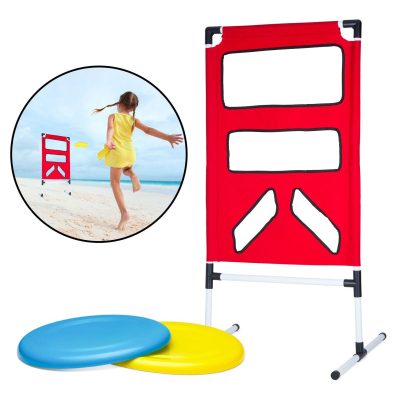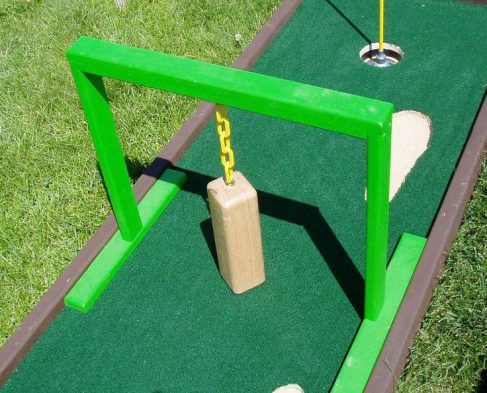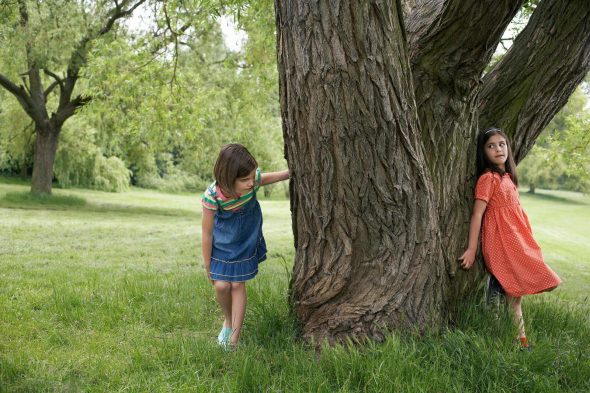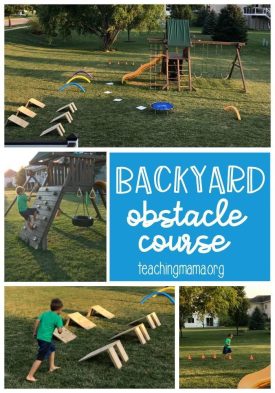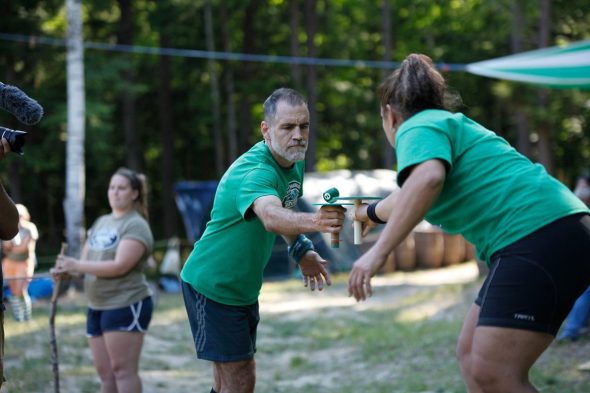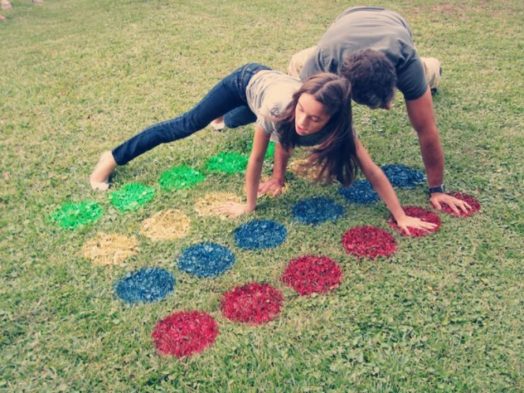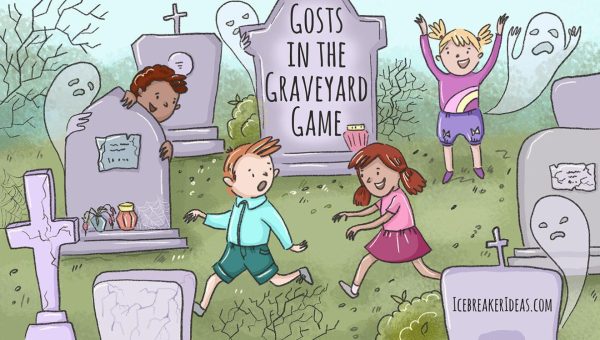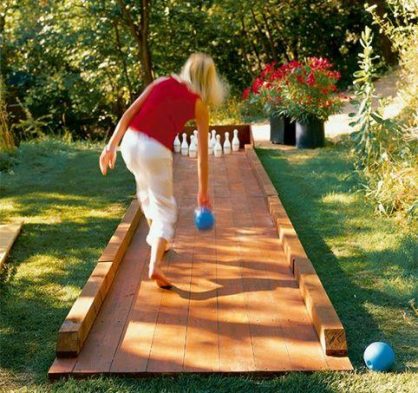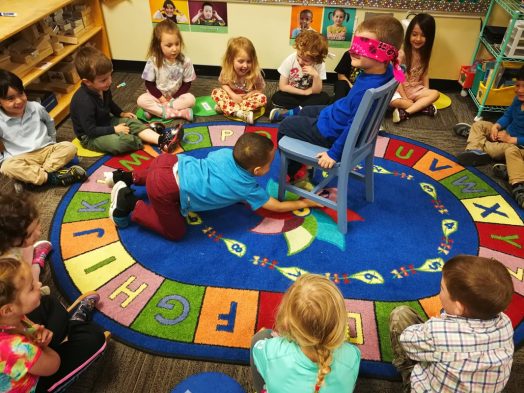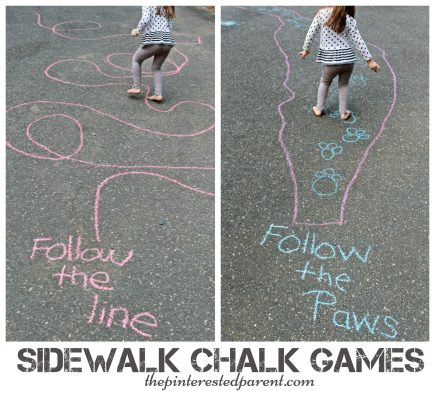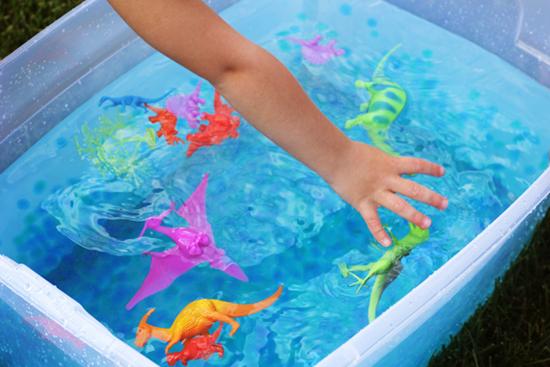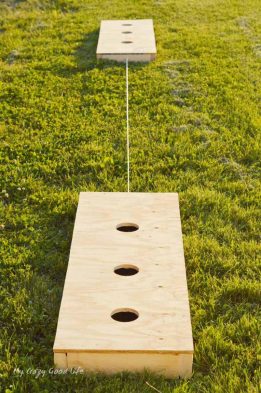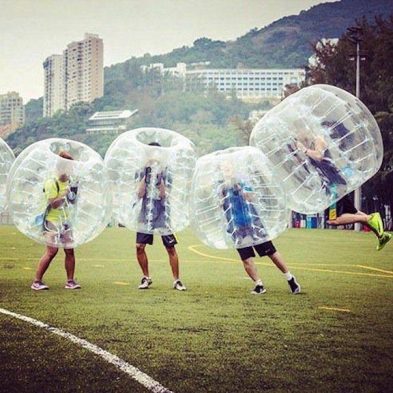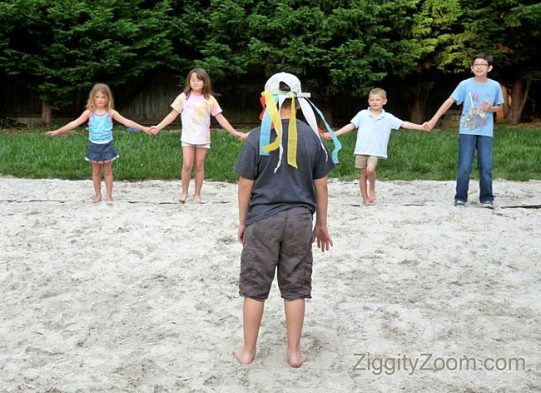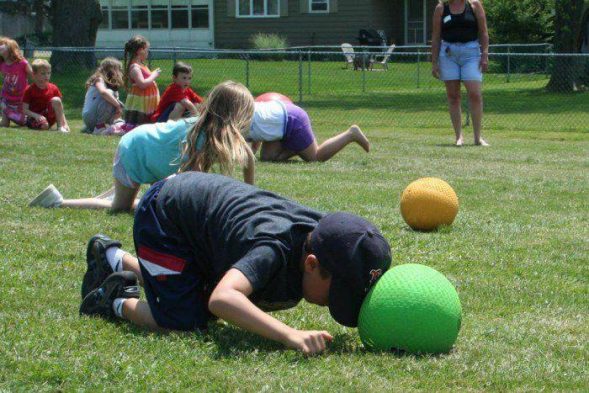To begin, we must understand what games are and how they vary from sports. Individual talents and performance are emphasised in games played at home by many people. Sports are games that are played outside of the house by a group of individuals who follow a set of rules and are required to contribute equally.
So, what are the different kinds of games? Games are classified according to their medium and format. There are many different types of games to keep us engaged and active, ranging from conventional tabletop board games to the most recent exciting games. These outdoor activities aren’t meant to be played alone. Invite your family, friends, neighbours, and classmates to play these enjoyable outdoor activities.
Different Types of Outdoor Games Names With Pictures
Find outdoor games that are perfect for your group size, age range, and skill level. Here is the latest list of all types of outdoor games names with pictures and images that you should know about.
Also Read: 70 Different Types of Indoor Games To Play
1. Hide and Seek
This is a game that everyone has played. Since hiding and finding is a frequent interest among tiny children, most parents have played with their children. This game has a lot of different variants, according to what I’ve heard. You count to twenty, ten, and one hundred at different times. Sometimes you can sprint to a home base and tag yourself as “safe,” while other times you have to wait to be found. The basic concept is that one person is “it,” and that individual closes his or her eyes and counts to a specific number without seeing before attempting to locate the others.
2. Kick The Can
This game is a cross between tag and hide-and-seek. A can is put in the middle of the playing field and one individual or a group of persons is identified as “it.” While the others flee and hide, the “it” closes his or her eyes and counts to a particular number. “It” then goes on a search for everyone. When “it” tags someone, they are sent to a holding pen for caught gamers. The captured players are released if one of the un-caught players kicks the can. Once all of the non-“it” players are in the holding pen, the game is ended.
3. Capture The Flag
When played with a big group, this game is the most enjoyable. Divide the group into two teams, each with a flag or other identifier at their base. The goal of the game is to cross into the opposing team’s area, grab their flag, and return safely to your own. You may send “enemy” players to your jail by tagging them in your domain. They may be released from jail by a member of their own team rushing into your area, tagging them, and then sprinting back, with only one freed person per jail escape permitted.
It is often suggested that all of the inmates hold hands and form a chain back toward their own zone, making it simpler for their teammates to tag them. Steal the Sticks, a similar game, was also played. It followed nearly the same rules as the original, except instead of a single flag, many sticks were utilised.
4. Parachute Outdoor Game
This game includes a huge round parachute, preferably with handles, and individuals holding the parachute all around the edges, making it fun for kids of all ages. It helps if there is someone in authority who tells everyone what to do. Players can just flutter the parachute up and down a little, go all the way up and down, or go all the way up and then rush beneath, sitting on the parachute’s edge, creating an air bubble with everyone within.
Players may also throw light objects on top of the parachute, such as wiffle balls or beanbags, and make them jump by ruffling the parachute. In addition, one person can sit in the centre of the parachute while the rest of the group ruffles it near the ground. If there is a smooth floor and a light youngster, the child can sit in the middle on top of the parachute, while the rest of the group walks around the perimeter while still holding the parachute edge. After that, everyone starts pulling backwards, rotating the youngster. There are a plethora of options.
5. Traffic Cop
This game is best played on a roadway with little to no traffic or on a big paved area. Bikes, carts, pedestrians, scooters, or whatever else is available are required. One person directs traffic to ensure that children do not collide. It’s more enjoyable than it seems, because it teaches children about crossing the street and traffic safety.
6. Four Square
This ball game is played on a square court with four smaller squares numbered one through four. Each square has one participant, with the highest rated player in square one and the lowest ranked player in square four. The ball bounces between the players, landing once in the other person’s square before being caught. We had a plethora of additional regulations to select from when I was a youngster. The rules were chosen by the person in square one. Anyone who breaks the rules will be demoted or removed, and another player will take their place in square four. Unless you take turns, the maximum number of players is four.
7. Hopscotch
Make a hopscotch grid using some sidewalk chalk. From one to nine, number the squares. Choose a rock that is suitable for throwing. Small ones tend to bounce excessively, and larger ones are difficult to toss. To begin, throw the rock onto Square 1. Hop over the rock with one foot or both feet (to follow the hopscotch pattern) until you reach the finish.
Return to Square 2 by turning around and returning. Pick up the rock in Square 1 and hop across to the start while balancing on one foot. Square 2 is the next square in the design. And so forth. Your round is finished if you hurl your rock and miss the right square. This game may be played with as many people as you like, but only one person can play at a time. If it’s rainy, dark, or too cold outside, you may use indoor hopscotch mats or foam pieces, or just follow a pattern on the floor using a beanbag instead of a rock.
8. Jump-Rope and Double Dutch
Jumping rope was one of the most popular ways I spent my playtime as a kid. For my age, I became pretty adept at it, both in terms of speed and ability. It was enjoyable to jump by myself, but it was even more enjoyable to jump with a long rope and a few of buddies. Jump-rope rhymes come in handy here. They make a basic workout into a fascinating game in which you may compete with yourself and others. There’s also double dutch. The older gals who could play double dutch used to amaze me. I was caught up pretty instantly the first time I attempted it. It isn’t as difficult as it appears if you know how to accomplish it.
9. Chinese Jump-Rope
Three individuals are required for this game, or one or two persons with excellent seats. It’s simple to do inside, as long as you have a solid floor. In the sense that you jump, this game is similar to conventional jump rope. Quite a bit. You, on the other hand, follow a pattern. Two individuals (or chairs) stretch their feet within the rope and stand far enough apart for a third person to leap between them. The third person, known as the jumper, stands in front of one of the persons holding the rope and jumps left, right, inside, outside, and on the ropes in a sequence.
It’s up to you the pattern you choose, but it should be the same for all participants. The game begins with the rope wrapped around the ankles. The rope is brought up to the calves once the jumper has completed the jump successfully. Then the knees, and finally the thighs. It usually doesn’t go much further than that. It’s someone else’s turn after you miss.
10. Jacks
This game may be played indoors or outdoors on any flat surface. The jacks are scattered around the playing area by the player tossing them out of one hand, as if rolling dice. The ball is then flung up, bounced once, and then caught before it bounces again. Before the ball’s second bounce, the player tries to scoop up jacks and grab the ball with one hand. The number of jacks to be collected is counted in ascending order.
Pick up one (“onesies”), two (“twosies”), three (“threesies”), and so on. There are several variants to the rules of this game, such as “pigs in the pen” and “double bounces.” I wish I had played Jacks when I was a kid, but it was far more popular when my mother was a kid.
11. Marbles Outdoor Game
The general rules are that you must first make a circle in the sand or on the sidewalk, then take turns knocking each other’s marbles out of the circle with your single giant marble. There are several variants, just as there are with the other games. However, I haven’t played this game much because I usually tend to injure myself when flipping the huge stone into the ring! A marble mat with distinct point zones can also be used.
12. Red Light, Green Light
This game may simply be played inside if there is enough space. At one end, one person is the traffic light, while the other participants are at the other. When the traffic light comes to a stop in front of the group, he or she exclaims, “Red light!” and everyone must stop. While the gang attempts to get as close to the traffic light as possible, the traffic light turns around and exclaims, “Green light!” If anybody is seen moving, the traffic light swiftly turns around and says, “Red light!” If anyone is seen moving, they must return to the beginning point. The first person to tag the traffic light wins, and the next traffic light is assigned to them.
13. Mother, May I
The rules of this game are similar to those of Red Light Green Light. “Mother, may I take steps forward?” one member of the group asks the one in front. “Yes, you may,” or “No, you may not,” says the person in the front. You may mix up your requests by include things like baby steps, rotating steps, jumps, or anything else appeals to you. The one who tags the person in front first wins and becomes the next person in line.
14. Says Simon
This game may be played in any tiny place, even a vehicle. Simon is one of the people who begins by saying, “Simon says, ‘[insert action here]’.” The action must subsequently be carried out by everyone. If Simon makes an action request without first stating “Simon says,” everyone who performs the action is eliminated. For the following round, Simon will be the last player left playing.
15. Tag Outdoor Game
Everyone appears to know how to play tag, but just in case it wasn’t part of your childhood game repertoire, here’s how you do it. A bunch of youngsters chooses who will be “it” at the start. That individual runs about chasing after the others, attempting to tag one of them with their hand. “It” is now the newly marked individual. The rule of “no tag-backs” states that you cannot tag the person who tagged you. When everyone has had enough of playing, the game comes to an end.
16. Shadow Tag
Instead of marking each other’s body, you tag each other’s shadow with your feet in this entertaining variation of Tag. As a result, it must be played outside on a sunny day. The more difficult it gets closer to midday, the more tough it becomes.
17. Freeze Tag
This is a variant of Tag in which you must freeze where you are if the person who is “it” tags you. You can be unfrozen by being tagged by another player.
18. TV Tag
A version of Freeze Tag in which the person who unfreezes the frozen player must say the name of a TV show. That show can’t be used during the game again after that.
19. Marco Polo
In this version of tag, the game is played in a pool. “Marco!” screams whomever is “it” as they close their eyes. “Polo!” scream the other players. After the “it” person has tagged one of the others, that person becomes “it.” Make sure that none of the participants are playing in a pool that is too deep for them.
20. Blind Man’s Bluff
This game is a variant on tag that was popular in Tudor and Victorian England. The “it” player is blindfolded and tries to tag the other players. Make sure you’re playing in an area free of obstacles and other dangers.
21. Red Rover
Divide the group into two teams, each of which should form a long line, holding hands and facing the other team. The distance between the two teams should be about 20 feet. “Red Rover, Red Rover, let come over!” the teams alternately scream out. That youngster abandons their team’s line and sprints as fast as they can toward the opposing line, attempting to burst through the clasped hands.
If they succeed, they will be able to bring someone back to their team. If they don’t, they will be assigned to the new team. When a team is down to one member, that person attempts to break through the other squad. If they don’t, their team will lose. If they succeed, they get another player and the game continues.
22. Heads Up, Seven Up
This game, which dates back to the 1950s, is one that we used to play in elementary school. It was generally done in the classroom, with everyone at their desk, in my experience. Seven players head to the front to begin the game, and the teacher says, “Heads down, thumbs up!” Everyone who is still seated at their workstation lowers their head, extends an arm, and raises their thumb.
The seven youngsters in the front row go around and press one another’s thumbs down. “Heads up, seven up!” shouts the instructor as they all return to the front of the room. The players at the desks raise their heads, and the seven players who had their thumbs pressed down rise to their feet. Each participant takes a turn naming the person they believe pressed their thumb down. They swap places with the presser if they’re accurate. The game can then be restarted.
23. Spud
This is a great outdoor game. Every player is assigned a number, and the person who is “it” for that round is surrounded by the other players. The ball is then thrown straight up by “It,” and the other players flee. When the ball hits the peak of its throw, “it” yells out one of the other players’ number and then runs away. When a player’s number is called, he or she must return and catch the ball (or chase after it if it is bouncing around).
“Spud!” they shout once they have the ball. Then everyone else has to stop moving. The player who has the ball must try to strike one of the other players with it. If they do, the new individual is assigned a letter (S, P, U, D, etc.) and becomes “it.” If they miss, the person who threw the ball becomes the following round’s “it.”
24. Button, Button, Who’s In Charge Of The Button?
The group sits or stands in a circle, hands clasped in front of them, whether indoors or outside. One person grabs the button and walks around the circle, claiming to place it in the hands of another person. They place the button in one person’s hand and then walk the rest of the way around the circle, pretending to place it in everyone else’s. Then, as the players move around the circle, they try to guess who holds the button currently. “Button, button, who’s got the button?” the group asks before each person’s guess. The participant might then express his or her guess. When the player holding the button is ultimately identified, the button is distributed during the next round.
Because this game involves a button, make sure that all of the children participating are old enough not to choke on it. One youngster stands in the centre of the circle in another variation of this game (the one I am more familiar with), and the button is passed around the backs of the rest of the group. Those without the button act as if they are passing it. When the passing comes to a halt, the player in the centre must determine who has the button.
25. Cat’s Cradle
This game is extremely portable and can be played almost anywhere. You can form numerous string shapes with your hands if you’re playing alone. You may play a game with two players by moving shapes back and forth and generating new ones. If you can, learn from someone, but there are also some decent books on the subject. Make your own string or get a book on how to make it, which usually includes a string!
26. Games Using Handclaps
Pat-a-Cake is the most common hand-clapping game that most individuals have played with their parents. From there, the songs and patterns get considerably more complex. Usually, two individuals are engaged, who sing or chant a rhythmic melody while executing a succession of clap patterns on their own and each other’s hands. Many rhymes may be found online, but it’s ideal if you can learn from someone else or watch a video to grasp the notes of the song and the beat of the clapping. There are numerous hand clap games to learn, from “Miss Mary Mack” to “Miss Susie” to “Say, Say, My Playmate.”
27. Crack The Whip
In the winter, this game is typically played on ice with skates, but it is considerably safer, if not as much fun, when played on grass. All of the players form a line and clasp hands. At one end of the line, someone skates or sprints around, swiftly changing directions. The players in the back of the “whip” tend to be pushed around with a lot greater power than those at the front. The longer the tail, the more difficult it is to keep hold of it. If the players in the back of the pack fall off the end of the tail, they can try to climb back on by moving closer to the front.
28. Musical Chairs
Arrange chairs facing outward in a circle with a total of one fewer than the number of participants. The music will need to be handled by another player. When the music begins to play, the players begin to circle the seats. When the music stops, the players rush to the nearest chair to take a seat. The player who does not have a chair is eliminated from the game. The game continues in this fashion when one of the seats is removed. The winner is the player who sits in the final chair. This game is often played indoors, but it may also be played outside with the use of outdoor chairs and a portable music player.
29. Telephone Outdoor Game
Most people laugh a lot when playing this game, so if you’re in the mood for some hilarity, give it a try. The players are seated in a circle. Someone comes up with a phrase or statement and whispers it to the next person. That individual then repeats it to the person on the other side of the room. This is repeated all the way around the circle. When the sentence reaches the last person, that individual reads it aloud. The result is hilarity. Because mistakes tend to multiply as they move around the circle, the concluding statement is generally substantially different from the initial sentence.
30. Freeze Dance
Make a decision on who will be in charge of the music. Everyone else dances when the music starts, the wilder the better. The dancers must remain motionless when the music stops. After that, anyone found moving is kicked out. The game continues until just one player remains, the winner.
31. Lagori or Pithu
At one point, it was a highly popular game among Indian children. A ball and a pile of flat stones are used in this game (which are stacked on top of each other). To knock the stones over, one team member tosses the ball towards the stack. While the other team (known as the hitters) tosses the ball at them, the team strives to repair the pile of stones. If the ball touches a player, he is ejected from the game, and his team must continue without him.
32. Chain Outdoor Game
Chain is another popular children’s game, however its popularity is waning. The goal of the game is for a ‘denner’ to catch the other players. When a player is caught by the denner, he or she joins a chain (which is created by joining hands) and must then assist the denner in catching the remaining players.
33. Gilli Danda Indian
Gilli Danda is a game that is similar to cricket and baseball, and it used to be more popular in India than cricket. The game is played using a little piece of wood that has been reduced on both sides called gilli and a huge piece of wood called danda that is used to hit the gilli. The goal of the game is to get as far as possible with the gilli.
34. Kho Kho Indian
The game consists of two teams, each of which must track down and tag the opposing team’s members in order to win. The pursuing team sends nine players onto the field in a straight line, with alternate members facing opposing sides. The chasers must catch the runners (who enter the field one at a time) before the time limit expires.
35. Lattoo Indian
Lattoo is a game in which the player spins a wooden top (lattoo) with grooves in the lower half and a nail at the bottom. The top spins by tugging on a strong thread wound around the grooves of the bottom part.
36. Chor-Sipahi Indian
The game is an Indian version of the popular western game “Tag.” The game is played between two teams: one of thieves (chor) and the other of sipahi (police). The sipahi try to capture the chor, and then it’s their time (that is, the chor become the sipahi and vice versa)
37. Four Corners
Primary school pupils frequently engage in the game of four corners. Four corners are marked, and “it” is assigned to one of the players. Without being captured by “it,” the remaining players must change corners. If a player is grabbed by “it” or is unable to stand in a free corner, he becomes “it.”
38. Kabaddi Indian Outdoor Game
Kabaddi is a game with Indian origins that was on the verge of extinction before regaining popularity. There are numerous variations of the game, but the most feature two teams of seven players each with their own allocated territory. Players must attack the opposing team’s territory and attempt to touch one of their players, putting that player “out.”
39. Dog and The Bone
The game consists of two teams and a “bone,” which might be a bottle, a handkerchief, or any other object. Each team sends a player forward to try to return the bone (which is put in the centre of the playing field) to his team. The player who does not take the bone is eliminated from the game.
40. Maram Pitthi Indian Outdoor Game
A sport that is comparable to dodgeball. It is made up of two teams that are dispersed across a vast region. A team’s players aim to strike the other team’s players with a ball (usually made of sponge). When a player is hit, he is eliminated from the game. It is also permissible to pass between teammates.
41. Vish Amrit Indian Outdoor Game
It’s an Indian take on the game “lock and key.” The denner’s goal is to touch the other players and provide them vish. When a person receives vish, he or she remains there until teammates arrive to offer him or her amrit. When all of the players have been caught and there is no one remaining to provide amrit, the game is over.
42. Monkey in The Middle
Most individuals, I believe, played this game as a youngster. This game requires three people to play: two persons passing the dish to another, and a third person catching the dish. There is no requirement for land and there is less equipment required.
43. Tag With A Twist
This fast-paced game adds a splash of colour to conventional tag. You’ll need multiple pairs of rubber bracelets or bands, one colour for each participant (six red, six blue, and so on for a total of six players). “It” is assigned to one of the players. Players begin exchanging their bands at “Go,” attempting to amass one band of each colour. Meanwhile, it tries to track down a trader. When she does, the trader is forced to give her a bracelet and becomes the new It. The player who collects all of the bracelets in each colour first wins.
44. Kick The Can
Make a group of four people and identify one of them as “It.” While the other players hide, one youngster kicks an empty can. The kicker raises the can after counting to 100 and exclaims, “Ready or not, here I come!” She then looks for additional players in the vicinity. She screams out the player’s name when she finds them. Both individuals sprint to the trash can and attempt to kick it. If the hider succeeds, the game ends; however, if the kicker succeeds, the hider is stuck near the can and the game continues. If additional hiders kick the can without being seen, captives may be let free. When everyone has been captured, the game is over.
45. D-I-S-C
The game is similar to basketball’s H-O-R-S-E. The last person to spell D-I-S-C wins. One player throws a disc into the hoop, and the others must match that shot or earn a letter.
46. Baseball
Set up four bases with a home plate near the hoop (cardboard squares work nicely). Starting at home, players work their way around the diamond, firing from each base. You’re out after three “strikes” (misses); complete the circuit to earn a run and another turn (with three strikes).
47. Obstacle Golf
Players race to complete a series of obstacles that begins and ends with a disc fired into the hoop (jump rope 25 times, kick a soccer ball into a net, and so on). Keep track of the clock; the quickest player wins.
48. Sardines
Hide-and-seek with sardines is a fun variation on the classic game. Here’s how to play this simple kids’ outdoor game: Everyone hunts for the hider while one person conceals. When a player locates the hider, they must join him in his hiding place. The game is won by the last player to discover the concealed group (which resembles a sardine can).
49. Backyard Obstacle Course
You can make a series of obstacles precisely the perfect size for your kids using items you already have on hand. Your children’s agility will be improved by jumping over and crawling through the obstacles. You may also organise relay races or tournaments, which are great outdoor party games!
50. Back To Back
Make your children sit with their backs to each other on the ground. Try to get them to stand without using their hands. To pull it off, they’ll need to press against each other at the same moment.
51. Do The Hop
Cover one of your child’s feet with a bandana or other lightweight cloth. Is she able to hop up and down with that foot elevated without loosing the fabric?
52. Don’t Drop The Ball
Try walking with your child holding a ball between her legs (choose one she can easily squeeze). Check to see whether she can skip or hop now.
53. The Setup Outdoor Game
Make a list of at least five numerical sequences on index cards (such as 1, 2, 7, 4, 9). Collect nine numbered cones, or just number milk cartons or other boxes using a marker. Arrange the cones in a large open space, several feet apart.
54. The Challenge
At a specified starting line, two players stand. The caller is one, while the runner is the other. The caller selects a card from the deck and announces the sequence’s initial number. The runner proceeds to the numbered cone, tags it, and then returns to the starting line. The caller then screams out the first two numbers on the card, and the runner must tag and return both cones in the correct sequence. This pattern of play continues until all of the numbers have been shouted out, with the runner learning the order and tagging cones. The caller and runner then switch places and play a fresh card from the deck.
55. Ghosts In The Graveyard
While the rest of the players count from 1 o’clock to midnight, one player, called the “Ghost,” must hide in the yard. They recite a chant in unison while strolling around after midnight (“Star light, star brilliant, hope I encounter a ghost tonight!”) The Ghost can emerge at any time and will attempt to tag players before they reach their assigned safe zone. Anyone who has been tagged by the Ghost must assume her responsibilities. Note that this frightening outdoor game for youngsters is much scarier at night!
56. Hungry Snake
This outdoor game only requires a jump rope! Gather the children in a circle with one person in the centre (the Snake). While gripping the jump rope, the Snake rotates around, making it move in a circle manner. As the rope approaches, the other players must hop over it, and if it contacts (bite) them, they are out of the game! On a hot day, each participant can hold a cup of water while playing to add to the pleasure.
57. Backyard Bowling
Encourage your children to build an impromptu bowling alley out of cans or bottles. They can each roll a semi-heavy ball towards the pins in turn.
58. Fitness Dice
With a set of handmade movement dice, you can get your kids’ exercise regimen off to a good start. Use duct tape to seal the edges and cover the sides of two tiny, cube-shaped boxes to form a pair (we recycled tissue boxes). Write numbers on one die (no higher than ten is preferable) and various actions (“hop on one foot” or “spin around,” for example) on the other with a permanent marker. Players take turns rolling the dice and then repeating the manoeuvre for the indicated number of times.
59. Doggy, Doggy, Where’s Your Bone
In this game, the youngster who plays the Doggy must turn around while his “bone” is stolen. Any object can be used as the bone, however for younger children, a toy bone may be more understandable. When the Doggy turns around, all of the kids try to appear guilty while Doggy tries to figure out who took the bone. Allow little children to guess until they find the correct individual, then pass the doggie baton to the next youngster. You can set a restriction on guesses if you’re playing with older children.
60. Weeping Angels
Although the game’s official title is “Red Light, Green Light,” Doctor Who fans will recognise the similarities to everyone’s favourite not-so-scary aliens. Kids can only move when the person who is IT has their back turned in this game. You must freeze if IT is watching. If IT detects your movement, you must restart from the beginning. The next IT is the first person to touch it. If you’re going to name it “Weeping Angels,” you might make it much more fun by including terrifying angel masks (or not – they look really menacing).
61. Sidewalk Picasso Outdoor Game
Grab some Sidewalk Chalk and let your creative side shine. Start this pastime on your own, and before you know it, every kid in the neighbourhood will be sketching, and you’ll be able to sneak away to finish some chores. You can find instructions for producing homemade sidewalk chalk on the internet, but I’m not sure if it’s truly less expensive than going to the dollar shop.
62. Digging For Dinosaurs
Bury Toy Dinosaur Bones (or any other toy) and allow your children to find them. At a touch-a-truck event, my kids did this with little vehicles, and it was their favourite part of the experience.
63. Water Play
You can facilitate this two ways Experiment with a permanent set-up like the one shown to the right; or go simple with a temporary set-up like the one shown to the left.
Go cheap with a plastic tub you already own. In any case, let children enjoy water play without making a mess on the bathroom floor!
64. Gardening
Watering Can Gardening Kits in Pink, Blue, and Green from Imagine Childhood
Buying a charming Gardening Tool Set, similar to water play, may make your youngsters feel like grown-up gardeners. All they actually need is a bag of beans and a plot or pot of soil. Don’t worry if nothing grows during the toddler years; there will be more opportunities in the future.
65. Kids Gardening Set
Tote Bag, Spade, Watering Can, Rake, Fork, and Trowel are among the outdoor toys that come with a STEM learning guide.
66. Hula Hoop
Preschool? Really? This astounds me just as much as it does you. My 2-year-old, on the other hand, adores hula hooping and is surprisingly adept at it. This is a game that you may play with your children when they become older. With her middle school sibling, my tot enjoys hula hooping.
67. Bubbles Outdoor Game
Is there anything else I can say? You must produce bubbles, whether you purchase them by the gallon or manufacture them yourself.
68. Crayon Rubbing
Almost everyone has done this at some time in their lives. Peel an old crayon, then take a sheet of paper, place it on a textured surface, and rub the crayon over the paper. Kids may create their own unique design using a variety of colours and shapes.
69. Octopus
An Octopus serves as IT in this game of tag, and the fish must go from one end of the yard to the other without getting tagged. Once tagged, children must remain stationary and attempt to tag others as they pass. With a tiny rhyme that we didn’t have in my area, Ziggity Zoom gives the same basic guidelines that I recall from my youth. This game is more enjoyable when there are more players. It may be played with both older and younger children, but elementary school children will like it the most.
70. Michelangelo’s Madhouse
I’ve heard this ridiculous game referred to by a variety of names. Michelangelo, whomever he is, grabs each of the other players’ hands and spins them around several times before releasing them. Each player then comes to a complete stop when they touch down. This phase has no bearing on the game’s result, so youngsters can be as ridiculous as they like. Michelangelo goes through his madhouse after each statue is placed, aiming to make the other players laugh without touching them. The next Michelangelo will be the first (or, if you choose, the last) to laugh.
71. Relay Race
Kids run from one half of the yard to the other in a variety of ways: one legged, three legged, backwards, crab walk, quickest, slowest, or middlest? Allow your children to take turns shouting out the race results. If you’re throwing a party, you may buy a package that includes potato bags, leg bands, and trophies.
